Tennis Goes To War
The sport gentry has been caught off-guard once again. As with the nobles who locked themselves into their castles and villas while Black Plagues were harvesting souls on the outside, only to discover that the Masque of the Red Death would have broken into their luxurious parties, two years ago pro players had to come to terms that the tiny Coronavirus would shatter their well-established tours and force them to re-think their golden routine. Young males and females who are the enbodiment of health itself had to cope with something far more serious than an injury with respect for their standards of life. Not without bleeds, they somehow adjusted and moved on.
But after Disease, it came War.
And this proved something more offsetting for a community who seemingly has been mostly kept apart from the strife of conflicts, all throughout its history of a century and a half. Not that tennis players had been living on a separate planet, but when I read about the history of other sports, there is plenty of stories of famous champions who ended up dragged into the miseries of fights, trenches, and invasion. More than one hundred years ago, the British elite was playing rugby union at elite level in their elite universities and public schools. But when Gavrilo Princip’s gunshot ignited the Great War, most of them were drafted or even volunteered, and the inevitably, tragically long list of casualties at the end of the conflict virtually chopped off the head of the game. There is even a Wikipedia page dedicated to this subject – take a look at this page: List of international rugby union players killed in World War I
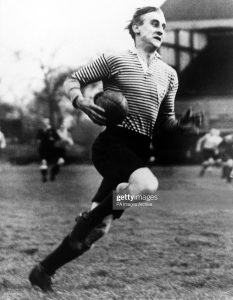
Just to name a few good fellas: George Dobbs had been a remarkable England flanker and died of shell wounds, while Arthur Harrison was capped twice again for England and then awarded a posthumus Victoria Cross medal. The most notorious Englishman who played rugby and died in the line of duty must however be Edgar Mobbs, captain of the already illustrious Northampton Saints, who had oddly played for the invitation superclub Barbarians F.C. but not for the team of the Rose (due to disagreements with the management of the English Rugby Football Union federation, something already happening even back then); Mobbs gathered 250 fellow sportsmen from his own city (hence “Mobbs’ Own”) and led them into the great massacre, heroically dying in the process. The most famous overall though must be Dave Gallaher, who had been the captain of “The Original” All Blacks, those who had stormed Great Britain by touring and dwarfing the British counties in 1905-06 (34 wins and 1 loss). Maurice Bayou had led his Dax team to national silverware and eventually captained the French national team before becoming an ace piloting his flying machine to take down German balloons, before being shot down himself in 1918.
By the way, a Russian survivor and refugee of WWI, Prince Alexander Obolensky, found shelter with his aristocratic family in London, enrolled at Oxford, and ended up as one of the most legendary wings, able to break through and score two tries to enable England to defeat New Zealand for the very first time. His life was then tragically cut short in WWII when he crashed his fighter plane after enrolling as a RAF pilot.
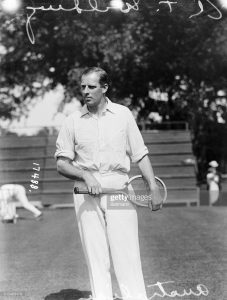
More in general, if we scroll the list of Olympians that lost their lives during WWI, we will find a lot of individuals devoted to athletics, cycling, fencing, football,… but only four elite tennis players all in all. Notably, one of them was the greatest New Zealander to date to handle a racquet: Anthony Wilding from Christchurch, winner of a four Wimbledon titles in a row between 1910-1913 and also 1914 finalist. Commissioned as an officer after enrolling on the advice of Winston Churchill himself (who clearly gave more than one ill-fated suggestion during that conflict), he died in the line of duty on the French front in 1915.
Little involvement is know about tennis players with WWII as well. Tournaments on war scenarios had of course to be put on hold, including three out of the four majors, with the sacrilege of the main court of Wimbledon even being bombed in 1940. Nonetheless, little is known about players switching their racquet for a rifle or, alternatively, taking a stand for either the democratic Allies or the totalitarian Axis, let alone for the new Bolschevik reality of the Soviet Union on the Eastern front (but tennis and Communism have always barely tolerated each other’s existence).
Only two, but valuable, examples come from the U.S. ranks: Joe Hunt and Jack Kramer shared the stage for the 1943 U.S. Championships finale (emerging from a clearly all-American draw) and the former clinched the title in four sets. Destiny would then drift apart for these two gentlemen, ultimately reversing fortunes.
Hunt, a Navy Academy collegiate, served at see as lieutenent during the 1944-45 years, eventually transitioning to air piloting which proved to be a fatal move: an air crash during a training mission in Florida took his life as his fighter plane entered a spin he could not escape from. Kramer enlisted in the same 1943 into the U.S. Coastal Guard corp, subsequently being admitted to its academy for officers as well, and served along the national coasts until a brief spell in Australian towards the end of the conflict; along the way, we was allowed take leaves to play tournaments on national soil in order to raise money for the army. He was finally discharged in 1946, resumed his over-the-top illustrious career, and then also became the man who set ground for the pro tour to come.
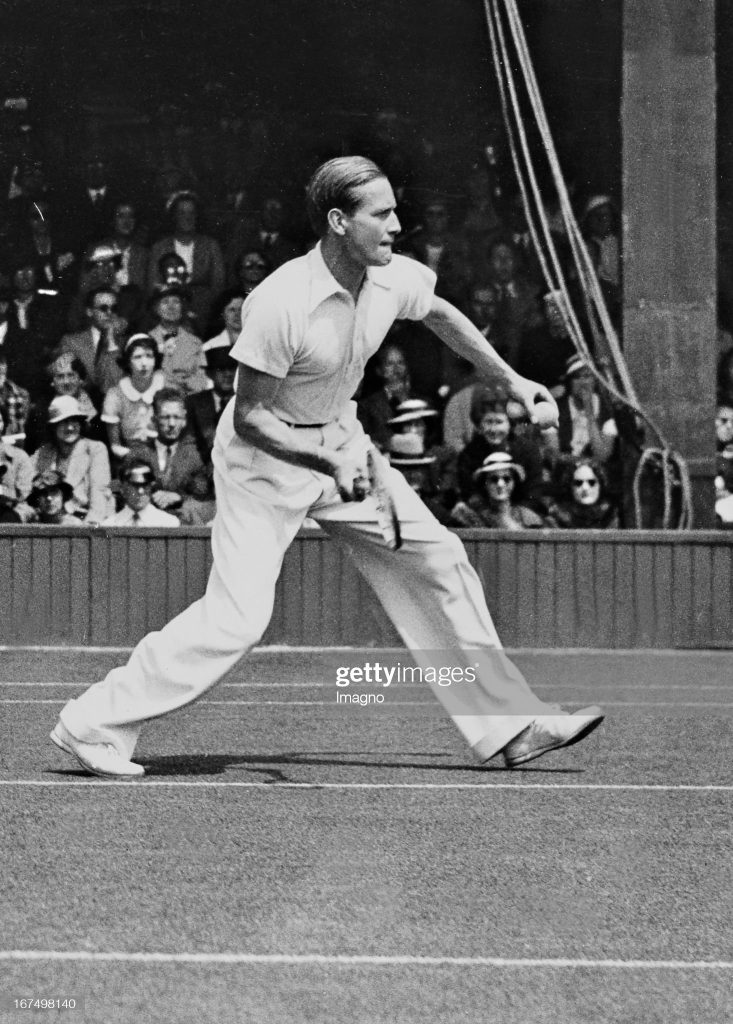
The most remarkable case of a tennis player to get fully involved, head to toes, into the WWII Nazi tragedy is on the other side of the Atlantic though: Freiherr Gottfried von Cramm, the greatest champion out of Germany before Boris Becker. Till 1937, he had been the role model for any tennis legend in white clothing: born into an aristocratic family, with gentleman’s manner deployed on and off the court, he had won two Roland Garros trophies and made several finals both at Wimbledon and at the U.S. Championships, with his pinnacle match played being the 1937 Davis Cup decider lost to Don Budge, which was some sort of the 2008 Fedal at Church Road. Unfortunately, after basically not allowing his triumphs to be used by the Nazi propaganda machine, in 1938 he had to experience the regime’s vengence, in the form of Gestapo arresting him on the basis of “moral misconduct” (i.e. homosexuality acts) and a mild consequent sentence. Once released and with his tennis career somewhat back on track, at the outbreak of the war he was again dragged into the circumstances by the regime, this time paradoxically as a national hero: conscripted and dispatched on the merciless Eastern front, he got to earn nothing less than an Iron Cross medal, before being wounded and discharged. Von Cramm stands out, but by various notches, as definitely the most emblematic example of tennis not being able to get away from the tragedy and heroism in the context of Adolf Hitler’s war.
After WWII, despite unfortunately having been no shortage of wars and fighting across the globe, we find almost no sign of active involvement of tennis leading acts. On this site Mark Winters told us the story of Troy Trabert, who served in the Navy during the Korean War in the 1950’s… but honestly, that is almost it.
Vietnam War would have been something supposedly different. Taking place only ten years after, but social-wise in radically different times, it was indeed subjected to outrageous opposition by peace-keeping parties. Cassius Clay/Muhammed Ali’s rejection of his drafting is among the most legendary moments of sport mixing with (and taking a stand against) politics; on the other hand, nothing as remarkable may be found from our “boxers divided by a net” side towards such conflict, in either sense. To the point that the only notable story we are aware of is that of Arthur Ashe’s junior brother Johnnie, a Marine Corps member, who in 1967 requested to be sent back to Vietnam to avoid risks that his elder sibling would be drafted to, so as to safeguard his emerging tennis career in the process. Of course the legendary and gentlemanly multiple slam winner did not know anything about it until years later, but his brother’s move clearly worked.
Once again, nothing can be easily traced about the tennis world reaction on the Six Day’s War, the Iran-Iraq War, the Lebanon conflict, or the many fighting outbreaks throughout the African continent. As for the Cold War, words of appeasement or even attack are unexistent, but that might be explained by the fact the the driving force of world Communism, the U.S.S.R., was led by a nomenklature hostile towards tennis, considered the primary “elitiste sport” of the Romanov tsars (seemingly, particularily by Leonid Brezhnev): no wonder that no Soviet consistent player emerged until the mid-Eighties.
The Falklands War took the world by surprise, but still there is no sign of partisan players even on the same year it took place (1982): again here, a partial explanation might lay on the fact that the United Kingdom had limited and declining champions on its side. And yes, on the other front Argentinian superstars Guillermo Vilas and José Marie Clerc decided to skip the Wimbledon edition which took place in London less than a month after the end of the conflict, but that might have been sheer common sense and, all in all, they must have been not too disturbed by the dismantle of their own national army by Mrs. Thatcher’s soldiers, as both men were regularly present for the subsequent 1983 edition.
As for the conflicts in the disgregating Yugoslavia in the Nineties, it took place when local players (first and foremost, Monica Seles from Serbia and Goran Ivanisevic from Croatia) had just started taking their place on the main tennis stage. While at the 1991 U.S. Open, a young Ivanisevic was of course concerned for his sister’s family who had to leave Split before bombing happened, but duly claimed that “racquet was his rifle”: he supported his country by refusing to play for Yugoslavia in the Davis Cup. That was surely a statement, but that was it. No player is reported to have gone back to fight into the Balkanian big mess (understandably). Monica Seles, of Hungarian, dropped the subject down (“Politics are for politicians, it is thier job”) and just checked that her grandparents back home were all right. By the way, most successful players had by then started the habit to live abroad on fiscal havens, and primarily in the quiet Monte Carlo.
Finally, as for the mid-East wars of early 21st Century, full radio silence from the tennis ground: everybody must have hoped for peace resolution, most likely, for nobody felt like taking a fierce stand. Simply, it is not perceived as a tennis player’s job. If we sum up the level of participation to wartime events, or of protest towards them taking place, we may come to the conclusion that tennis historically tends to stay well away from it, or to get involved as little as possible and with, let’s say, a clear lack of enthusiasm.
On a contrast, the reaction towards the Ukrainian War is now something that steers away from tennis’ traditionally neutral approach. The strong (if not harsh) reaction from within the tennis community itself is something clearly unprecedented. But why? At this point of time, three major factors may partially explain such new attitude.
First, there is a consolidated group of Ukrainian players of present or past world-elite level, currently mostly on the women side (5 players in the Top-100 surroundings, with superstar Elina Svitolina, a, Indian Wells former winner, leading the pack); with players coming from their Russian nemesis also making the strongest male team (and being clearly in proper embarrassment), it becomes very difficult to keep the war scenario neglected on the tour. An Ukrainian players have a strong sense of belonging.
Second, the whole civilized world is connected in real-time via social media and, on the most popular platoforms, famous players feel obliged to expose themselves on such a sensitive matter. They no longer need to get caught by some journalist for an interview: they make their move by posting videos, links, pics in blue/yellow clothes. And their followers expect them to do it. Consider that even the most Swiss individual among the Swiss, living in his Swiss canton in non-aligned Switzerland… had to post a somewhat peace-prone message, or he would have been cruxified by his own fans for being insensitive. Ukrainian players have been raising their cybernet voices loud in order to call for support, Russians players have been quite quick in finding their best ways to keep their heads under the sand, i.e. supporting peace in low-key. Tournaments have reacted by issuing statements of solidarity, the ATP and WTA have masked out any Russian flag, etc etc.. Real-time visibility of war and parties involved would anyway make it impossible for tennis to carry on “business as usual” as with a Vietnam War.
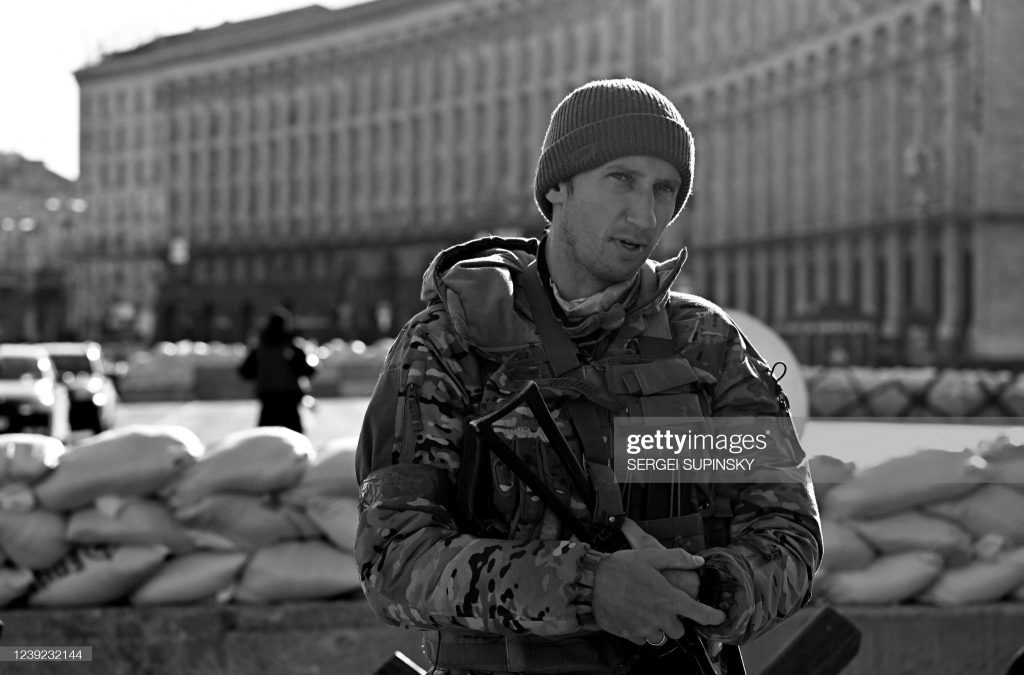
Third, and the most peculiar, Ukrainian sportsmen are a breed of their own sort: they volunteer for war. Former brilliant players Sergiy Stakhovsky and Aleksandr Dolgopolov have voluntarily left their safe havens and bank accounts abroad, kissed wives and children, in order to join their country’s army, be trained to shoot, and fight a supposed David vs Goliah match for survival (for what it is worth: I tip my hat in front of them – sheer respect). It is very difficult to understand, but we have seen it happening, live and from first-person point of view again via social media, therefore we all have a strong perception that this hardcore of fight is solid reality. Ukrainian sportsmen have compelled us to view the conflict happening, and kept our eyes open in the process. We can no longer looking at match reports without thinking of what Stakhovski and Dolgopolov are actually doing in the same moment. Daniil Medvedev has been holding the No.1 rank with a blank flag next to its name, and has mildly replied to the fact Russian is currenly a pariah country in the sport community. Blue and yellow outfits are an, if not strictly political, a geopolitical statement dragged into tennis courts as never before.
Tennis is venturing into uncharted territories. It has finally been pulled down from its high-class circles in the sky with diamonds to face the dirty tragedy down there of strife and war. From now on, it will have to experience internal debates that go well beyond whether the tie-break is appropriate in a fifth set.
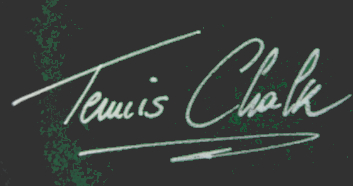
Bellissimo articolo, che devo rileggere stasera, con molta calma. Intanto lo giro ai miei contatti. Cari saluti.